WORD+25 Xmas Meet-Up: Dr Khan and Dr Gharibi Introduction!
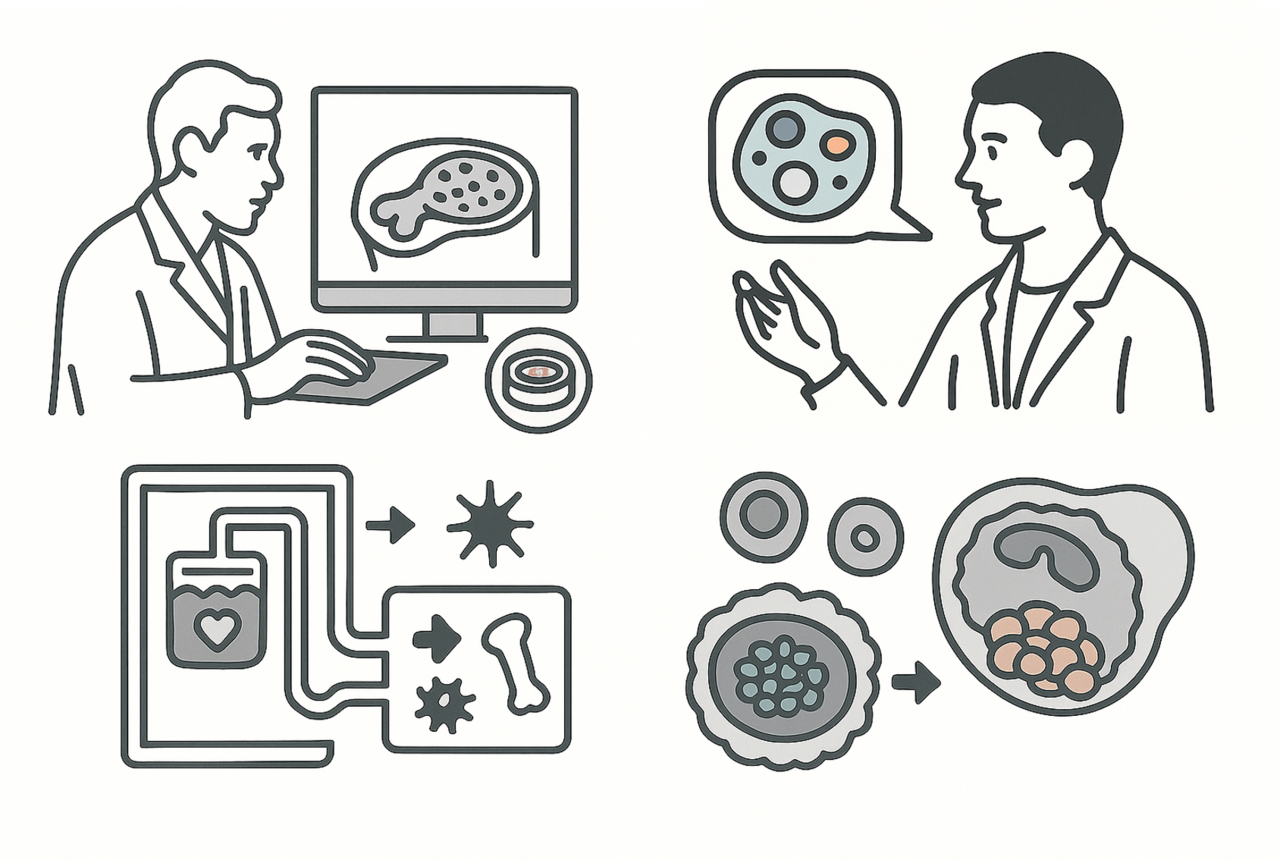
Dr Abdullah Khan is a Wellcome Trust Career Development Fellow and Principal Investigator at the MRC Weatherall Institute of Molecular Medicine, University of Oxford. Trained as a bioengineer with a strong background in stem-cell and vascular biology, Dr Khan leads an innovative research group exploring how the bone-marrow microenvironment shapes blood and immune-cell production across health, ageing, and disease.
His work focuses on building bone-marrow organoids, complex, three-dimensional models that recapitulate the architecture and function of the human niche. More recently, he has begun coupling distinct organoid systems to model how injury to other tissues (such as the heart) drives immune-cell recruitment and how those immune dynamics influence tissue injury and repair.
In his recent paper, “Human Multi-Organoid Platform to Model Immune Dynamics in Cardiac Injury and Disease” (DOI: https://doi.org/10.1161/CIRCRESAHA.125.326823), Dr Khan and his team developed a multi-organoid platform combining cardiac and bone-marrow organoids within a 3D-printed, fluidically connected device (Figure 1). This model captures the dynamic interplay between immune recruitment, inflammatory resolution, and tissue remodelling following ischemic cardiac injury. It offers a human-specific alternative to animal models, opening new avenues for mechanistic discovery and therapeutic testing in ischemic disease and heart failure.
Complementing this, his previous work, “comBO: A Combined Human Bone and Lympho-Myeloid Bone Marrow Organoid for Pre-Clinical Modelling of Haematopoietic Disorders” (DOI: https://doi.org/10.1101/2025.02.16.638505), introduces comBOs, composite bone and lympho-myeloid bone-marrow organoids that include osteolineage, vascular, lymphoid, and myeloid cells, providing a scalable, reproducible, and physiologically faithful human bone-marrow model.
Dr Khan’s research offers pioneering human-based models to unravel how immune-tissue interactions drive injury and regeneration, paving the way for mechanistic discoveries and therapeutic innovations in heart failure, inflammation, and bone-marrow disorders.
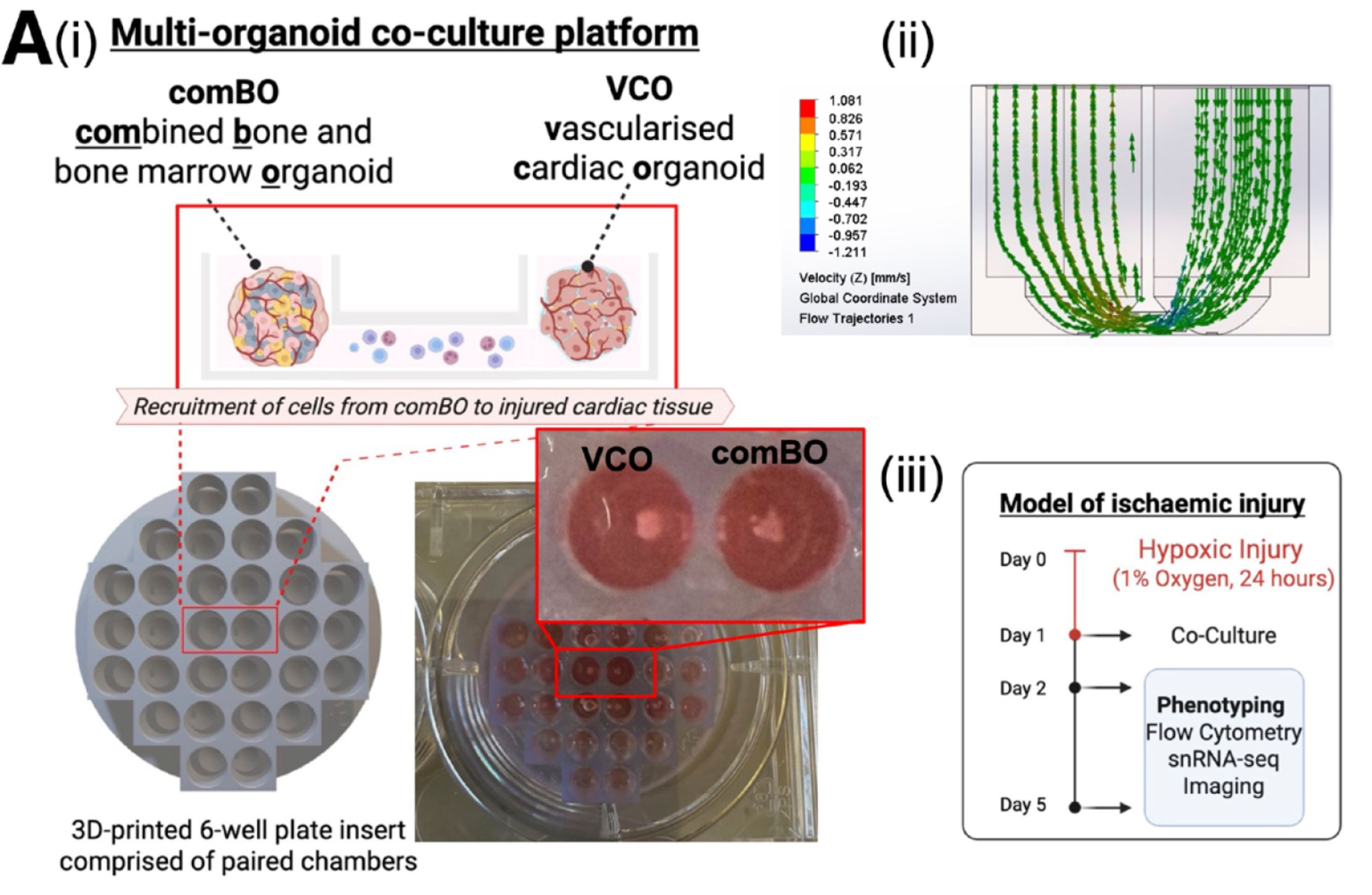 Figure 1 (sourced from https://doi.org/10.1161/CIRCRESAHA.125.326823): A, i, Design and implementation of a 3D-printed fluidic device that enables the exchange of cells between a bone marrow organoid (comBO) and vascularized cardiac organoid (VCO) system. ii, A fluid flow model depicting the relative flow rate and direction of travel across the fluidic device. iii, Ischemic injury was modeled by exposing VCOs to 24 hours of hypoxia (1%) before 5 days of coculture, with phenotyping performed at days 2 and 5 post-injury.
Figure 1 (sourced from https://doi.org/10.1161/CIRCRESAHA.125.326823): A, i, Design and implementation of a 3D-printed fluidic device that enables the exchange of cells between a bone marrow organoid (comBO) and vascularized cardiac organoid (VCO) system. ii, A fluid flow model depicting the relative flow rate and direction of travel across the fluidic device. iii, Ischemic injury was modeled by exposing VCOs to 24 hours of hypoxia (1%) before 5 days of coculture, with phenotyping performed at days 2 and 5 post-injury.
Dr Borzo Gharibi is a Principal Laboratory Research Scientist in Santos’ Quantitative Stem Cell Biology Laboratory at the Francis Crick Institute, London. Dr Gharibi’s research lies at the intersection of stem-cell biology, 3D tissue modelling, and extra-embryonic development, and is gaining international recognition for creating human-relevant in vitro platforms that capture developmental processes previously inaccessible to study.
In his recent Cell paper, “Post-Gastrulation Amnioids as a Stem-Cell-Derived Model of Human Extra-Embryonic Development” (DOI: https://doi.org/10.1016/j.cell.2025.04.025), Dr Gharibi and colleagues introduce Post-Gastrulation Amnioids (PGAs) (Video 1), stem-cell-derived 3D structures that self-organize into tissues resembling the human amnion, yolk sac, and extra-embryonic mesoderm, recapitulating early developmental stages from roughly two to four weeks post-fertilisation. Using this model, they demonstrated that GATA3 is both necessary and sufficient for amnion specification and that extra-embryonic signalling forms an autoregulatory loop promoting amnion formation. The PGA system’s reproducibility and scalability make it a powerful platform for dissecting embryo–amnion interactions and for large-scale pharmacological or clinical studies.
Dr Gharibi’s work provides transformative tools to study human early development, illuminating the biology of extra-embryonic and amniotic lineages while opening new avenues for translational applications, including amniotic-membrane-derived regenerative therapies.
Do not miss their talks at the WORD+25 Xmas Meet-Up!!
WORC.Community would like to thank its event commercial partners: QKine, LICORbio, Bio-techne & Network partner Crown Bioscience.
Recommended Content
October Newsletter launches WORD+2026 with 50% off a LIMITED Number of researcher tickets.
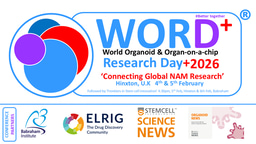
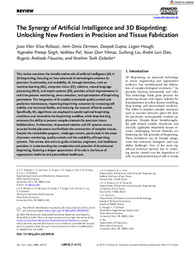
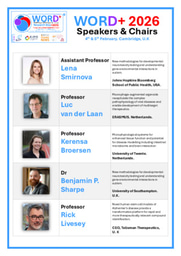
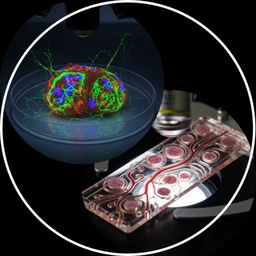

Please sign in or register for FREE
If you are a registered user on WORC.Community, please sign in